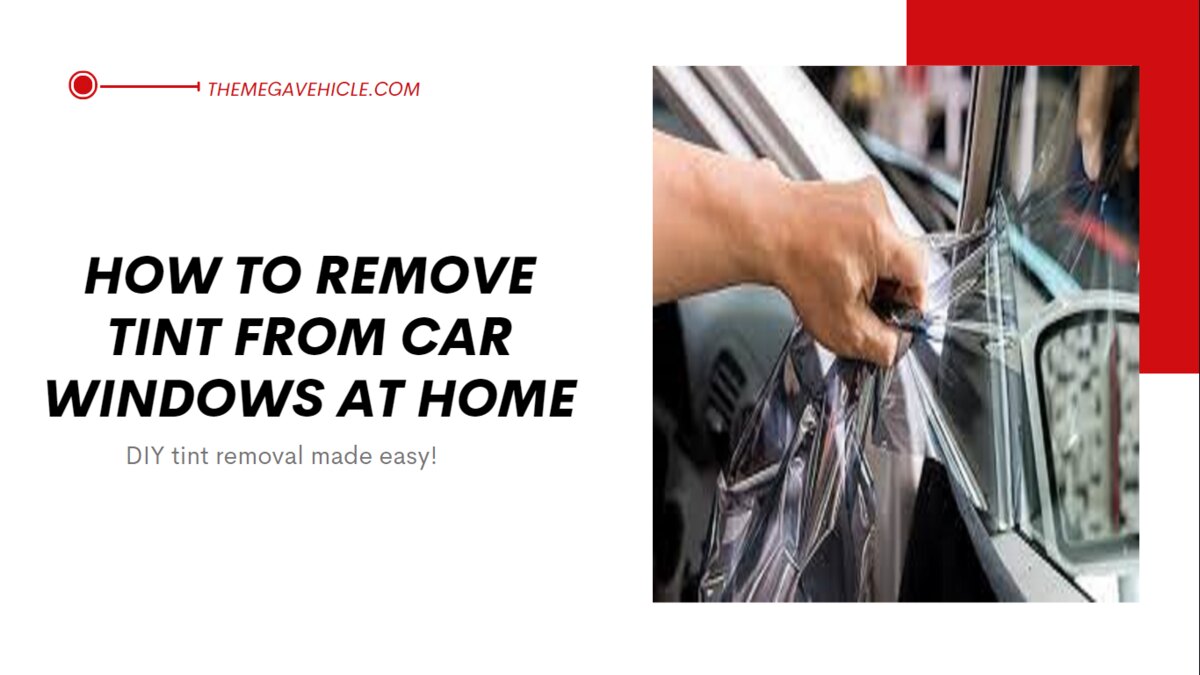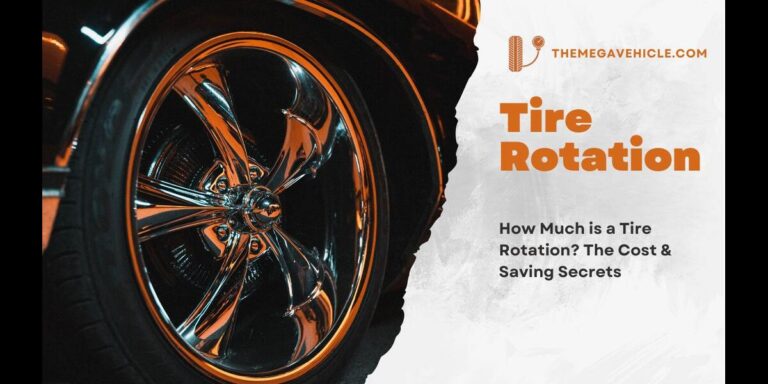How To Remove Tint From Car Windows At Home? DIY Easily!

Window tint, while adding a touch of style and privacy to your vehicle, can become a nuisance when it’s time for a change. Whether it’s due to fading, bubbling, or simply a shift in preference, removing window tint can be a straightforward DIY project. This comprehensive guide will equip you with the knowledge and tools necessary to safely and effectively remove window tint from your car windows at home.
Why Consider Removing Window Tint?
Window tint, a popular automotive enhancement, offers a range of benefits, including enhanced privacy, reduced glare, and protection from harmful UV rays. However, there are situations when removing window tint becomes a necessity. Here are some compelling reasons to consider removing window tint from your car windows:
1. Faded or Discolored Tint: Over time, window tint can lose its vibrancy and clarity, compromising its effectiveness and aesthetic appeal. Removing faded or discolored tint can restore your vehicle’s clear view and enhance its overall appearance.
2. Bubbling or Peeling Tint: Exposure to harsh weather conditions or improper installation can lead to bubbling, peeling, or cracking of window tint. Removing damaged tint is crucial to maintain a clean and attractive look and prevent further damage to the window film.
3. Legal Compliance: In some states or regions, there are strict regulations regarding the degree of window tint allowed. If your vehicle’s tint exceeds the legal limit, removing it is essential to avoid potential fines or legal hassles.
4. Change of Preference: As personal preferences evolve, the level of privacy or darkness provided by window tint may no longer suit your needs. Removing tint can allow more natural light into the vehicle, enhancing visibility and creating a more open feel.
5. Vehicle Resale Value: When preparing to sell your car, removing window tint can make it more appealing to potential buyers. Many buyers prefer vehicles with clear windows for better visibility and a more inviting atmosphere.
How To Remove Tint From Car Windows At Home
1. Gather Essential Tools and Materials
Embarking on a DIY window tint removal project requires the right tools and materials to ensure a smooth and successful process. Here’s a comprehensive list of items you’ll need to tackle the task effectively:
Must-Have Tools and Materials:
- Heat Gun or Hair Dryer: The heat source is crucial for softening the adhesive that binds the tint film to the window glass, making it easier to peel off. Choose between a heat gun for faster heating or a hair dryer for a more controlled approach.
- Razor Blade or Scraper: A sharp razor blade or a specialized window tint removal tool is essential for carefully scoring the tint film and creating an edge for peeling.
- Soapy Water: Lubrication is key to preventing scratches and promoting smooth peeling. Soapy water serves this purpose admirably, ensuring a hassle-free removal process.
- Spray Bottle: A handy spray bottle allows you to conveniently apply soapy water to the window and tint film, keeping everything well-lubricated.
- Microfiber Towels: These soft, lint-free cloths are ideal for cleaning the window glass after removing the tint film, leaving it sparkling clear.
Optional Tools and Materials for Enhanced Efficiency:
- Rubbing Alcohol or Adhesive Remover: For stubborn adhesive residue that refuses to budge, rubbing alcohol or an adhesive remover can be your knight in shining armor.
- Utility Knife: A utility knife can prove useful for cutting the tint film into smaller sections, making the peeling process more manageable.
- Work Gloves: Protect your hands from accidental cuts and scrapes while handling the razor blade or scraper by wearing a pair of work gloves.
- Plastic Sheeting: Shield your car’s interior from falling tint fragments or debris by draping plastic sheeting over the seats and dashboard.
- Extension Cord (if using a heat gun): If you’re opting for a heat gun, ensure you have an extension cord handy to reach a power outlet, especially if your work area is far from one.
With these essential tools and materials at your disposal, you’re well-equipped to tackle the DIY window tint removal project with confidence. Remember, patience, carefulness, and the right tools are the recipe for success.
2. Preparing Your Car and Workspace
Before diving into the actual tint removal process, it’s essential to prepare your car and establish a safe work environment. This will ensure a smooth, efficient, and hazard-free experience. Follow these simple steps to get ready for the task ahead:
- Park Your Car in Shaded Sanctuary: Choose a well-ventilated area, preferably outdoors, where direct sunlight is minimal. This will prevent the tint film from drying out prematurely, making it more challenging to remove.
- Shield Your Car’s Interior: Protect the seats, dashboard, and door panels from potential scratches, spills, or falling tint fragments by covering them with old blankets, towels, or plastic sheeting.
- Eliminate Loose Tint Debris: Use a vacuum cleaner or brush to meticulously remove any loose tint fragments from the window glass and surrounding areas. This will prevent clogging the razor blade or scraper and ensure a clean and unobstructed removal process.
- Gather Your Tools and Materials: Organize all the necessary tools and materials within easy reach, including the heat gun or hair dryer, razor blade or scraper, soapy water, spray bottle, microfiber towels, and any optional tools you might need. This will streamline the process and keep everything readily accessible.
- Secure Your Car: Engage the parking brake and ensure all doors and windows are firmly closed to prevent the car from rolling or allowing debris to enter the interior.
- Don Your Protective Gear: Equip yourself with safety glasses to shield your eyes from flying tint fragments or debris. If you plan to use rubbing alcohol or adhesive remover, wear gloves to protect your skin from irritation.
- Clean the Windows: Thoroughly clean the window glass using soapy water and a microfiber cloth. This will eliminate any dirt, grime, or debris that could interfere with the tint removal process.
By following these preparatory steps, you’ll create a safe and well-organized workspace, minimizing the risk of accidents or damage to your car during the tint removal process. Remember, patience, carefulness, and proper preparation are the cornerstones of a successful tint removal project.
3. Delicately Detaching the Tint Film
With your car prepped and a safe workspace established, it’s time to tackle the heart of the matter – removing the tint film. Follow these instructions carefully to effectively remove the tint without damaging the glass:
I. Soften the Tint Film
Using a heat gun or hair dryer, apply heat to the tint film in small sections. Hold the heat source about six inches away from the glass to avoid damage. As the tint heats up, it will become softer and easier to peel off.
II. Score the Tint Film
Once the tint is sufficiently heated, use a razor blade or scraper to gently score the edge of the tint film. Apply light pressure to avoid scratching the glass. This scored edge will serve as a starting point for peeling off the tint film.
III. Peel off the Tint Film
Starting from the scored edge, carefully peel off the tint film from the window glass. Work slowly and steadily, applying heat as needed to keep the adhesive soft and facilitate peeling. Avoid pulling too hard or jerking the tint film, as this could cause it to tear or damage the glass.
IV. Continue Heating and Peeling
Repeat the heating and peeling process for the entire window, working in small sections and overlapping slightly to ensure complete removal. Be patient and avoid rushing the process to prevent tearing or scratching the glass.
V. Remove Stubborn Tint Fragments
If any small tint fragments remain stuck to the glass, use a razor blade or scraper to gently pry them off. Be extra cautious when working near the edges of the glass to avoid scratching.
Effective Tint Removal Tips:
- Consistent Heat Application: Maintain a consistent heat source to keep the tint film soft and pliable throughout the removal process. Avoid overheating or leaving the heat source in one spot for too long, as this could damage the tint film or the glass.
- Gentle Peeling Technique: Peel the tint film with gentle, steady pressure. Avoid pulling too hard or jerking the film, as this could cause it to tear or damage the glass.
- Work in Small Sections: Divide the window into smaller sections and work on one section at a time to ensure thorough removal and prevent overwhelming yourself.
- Utilize Soapy Water: If the tint film is particularly stubborn, apply soapy water to the glass and the tint film to help lubricate the razor blade or scraper and facilitate peeling.
- Replace the Razor Blade: If the razor blade becomes dull or damaged, replace it with a new one to maintain sharp edges and prevent scratches on the glass.
By following these instructions and tips, you can effectively soften and peel off the tint film from your car windows without damaging the glass. Remember, patience, carefulness, and the right tools are essential for a successful tint removal project.
4. Removing Residual Adhesive
After successfully removing the tint film, you might notice some stubborn adhesive residue clinging to the window glass. This sticky residue can be unsightly and detract from the overall appearance of your car windows. Follow these steps to effectively remove any residual adhesive:
I. Gather the Necessary Supplies:
- Soapy water
- Spray bottle
- Microfiber towels
- Rubbing alcohol or an adhesive remover (optional)
II. Apply Soapy Water Generously:
Spray the window glass liberally with soapy water, ensuring the adhesive residue is thoroughly saturated.
III. Use a Razor Blade or Scraper:
Gently scrape the adhesive residue using a razor blade or scraper, working in small sections. Apply moderate pressure to remove the adhesive without scratching the glass.
IV. Rinse and Repeat:
Rinse the window with clean water to remove the loosened adhesive and soapy water residue. Repeat the scraping and rinsing process until all visible adhesive is eliminated.
V. Tackle Stubborn Residues:
If any stubborn adhesive residue persists, apply rubbing alcohol or an adhesive remover to a microfiber towel and gently rub the affected area. The alcohol or adhesive remover will help dissolve the remaining adhesive.
VI. Final Cleaning and Drying:
- Rinse the window thoroughly with clean water to remove any remaining alcohol or adhesive remover residue.
- Use a clean microfiber towel to completely dry the window, ensuring no streaks or watermarks remain.
5. Polishing and Protecting Your Car Windows for a Renewed Shine
After removing the tint film and thoroughly cleaning the windows, it’s time to restore their sparkle and protect them from future damage. Polishing and applying a protective coating will enhance the clarity and appearance of your car windows, making them look like new again:
I. Gather the Necessary Materials:
- Glass cleaner
- Polishing compound
- Microfiber towels
- Applicator pad (optional)
II. Ensure Thorough Cleaning:
Verify that the windows are completely clean and free of any remaining adhesive residue, dirt, or debris. Use a microfiber towel and glass cleaner to thoroughly clean the entire window surface.
III. Apply Polishing Compound:
Apply a small amount of polishing compound to a clean microfiber towel or applicator pad. Work the polishing compound into the window glass using circular motions, focusing on any minor scratches or blemishes.
IV. Buff to a Gleaming Finish:
Once the polishing compound is evenly distributed, buff the window to a shine using a clean microfiber towel. Work in small sections, overlapping slightly to ensure complete coverage.
V. Consider an Extra Layer of Protection (Optional):
For an added layer of protection against scratching, fading, and watermarks, consider applying a protective coating to your car windows. Follow the instructions on the specific product you choose for proper application.
Enjoy Clear and Legal Car Windows with DIY Tint Removal
Congratulations on successfully removing the window tint from your car! By adhering to the detailed instructions and safety precautions provided in this guide, you have effectively restored your car windows to their clear and unobstructed state.
Now you can enjoy improved visibility, reduced heat gain, and the gratification of a DIY accomplishment. Remember to maintain your clear windows by regularly cleaning them with glass cleaner and a microfiber towel.
If you encounter any difficulties during the tint removal process or have any concerns about the condition of your windows, don’t hesitate to seek professional assistance from an experienced window tinting specialist. They can provide expert advice and ensure your car windows are in top condition.
Benefits of Removing Window Tint at Home
Removing window tint from your car windows at home offers a multitude of advantages, making it a worthwhile DIY project. Let’s delve into the key benefits you can reap from tackling this task yourself:
- Cost-Effectiveness: Ditching the professional tint removal service and doing it yourself can significantly reduce your expenses. Professional tint removal can cost anywhere from $100 to $300, depending on the vehicle’s size and type. On the other hand, removing tint yourself can be done for a fraction of the cost, typically around $20 to $50 for materials.
- DIY Achievement and Satisfaction: Completing the tint removal process yourself can provide a sense of accomplishment and pride. Knowing you tackled the project on your own can boost your confidence and motivate you to take on future DIY endeavors.
- Flexibility and Convenience: Removing tint at home allows you to work at your own pace and schedule, without the constraints of appointments or business hours. You can choose a time that fits your convenience, whether it’s early in the morning, late in the evening, or on a weekend.
- Personalization and Control: Removing tint yourself gives you complete control over the entire process. You can choose the tools, materials, and techniques that you prefer, ensuring the tint removal is done to your satisfaction and standards.
- Improved Visibility and Safety: Removing window tint enhances visibility, especially during low-light conditions. This can significantly improve safety and reduce the risk of accidents, especially when driving at night or in foggy conditions.
- Reduced Heat Gain and Comfortable Interior: Dark window tint can trap heat inside the vehicle, making it uncomfortably hot on sunny days. Removing tint allows better air circulation and reduces heat gain, resulting in a more comfortable cabin temperature, especially in warmer climates.
- Enhanced Appearance and Appeal: Removing faded, damaged, or outdated tint can restore the clear and attractive look of your vehicle’s windows. A fresh set of clear windows can make your car look newer, sleeker, and more polished.
- Compliance with Regulations and Avoiding Legal Hassles: By removing tint that exceeds legal limits, you can avoid potential fines or legal hassles. Different states and regions have varying regulations regarding the degree of window tint allowed. Removing tint ensures you comply with local laws and regulations.
- Environmentally Friendly Approach: Removing tint yourself reduces the environmental impact compared to hiring a professional service. By not contributing to the demand for commercial tint removal services, you minimize the consumption of resources and the generation of waste.
- Empowerment and Skill Development: Removing tint at home can empower you to tackle other DIY projects around the house or car, fostering a sense of self-reliance and skill development. The knowledge and experience you gain from this project can be applied to future DIY endeavors.
In conclusion, removing window tint at home offers a practical and rewarding experience. It allows you to save money, enhance your car’s appearance, improve visibility, and boost your DIY skills. With the right tools, materials, and guidance, you can successfully remove window tint and enjoy the benefits that come with it.






